Economics
Harvey Weinstein’s rape conviction is overturned. Now what?
Published
3 weeks agoon
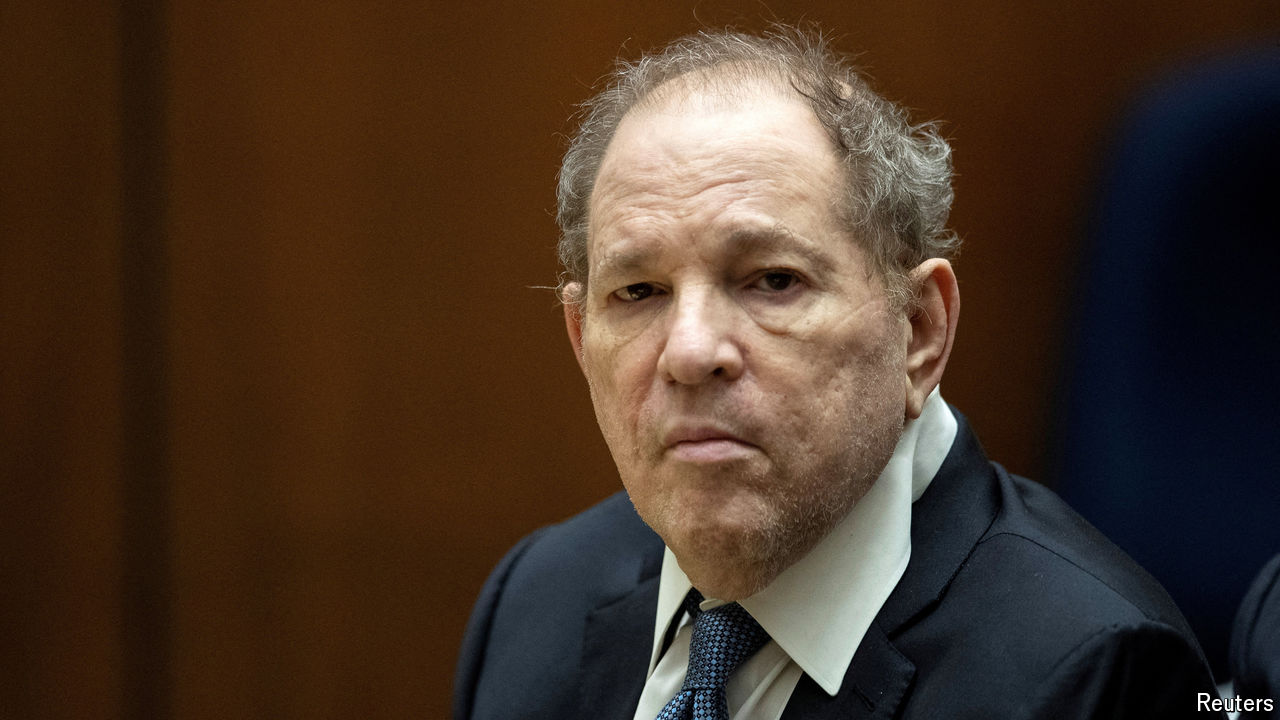
HARVEY WEINSTEIN, a former Hollywood mogul and public enemy number one of the #MeToo movement, is a free man again—at least as far as New York’s top court is concerned. On April 25th Manhattan’s Court of Appeals ruled that Mr Weinstein did not receive a fair trial when he was convicted in 2020 of felony sex-crime charges and sentenced to 23 years in prison. He may face a retrial and also has a 16-year jail sentence to serve in California for rape, so will remain behind bars. But the symbolism of the decision—the biggest setback for #MeToo yet—is significant.
Although the ruling came as a shock to the general public, to many in the legal profession it did not. In 2023 a YouGov poll found that 83% of Americans believed that Mr Weinstein was guilty of charges including rape and sexual assault, and only 5% thought him not guilty, “regardless of the verdict”. But while the court of public opinion has little doubt about the guilt of Mr Weinstein—who has been accused by over 100 women of acts ranging from harassment to rape—his criminal conviction in New York was always on shakier ground. As The Economist wrote at the time, the judge’s controversial decision to allow three witnesses, who were not part of the charges, to testify about previous “bad acts” opened the door to an appeal. By allowing these extra accusers, argued Mr Weinstein’s lawyers in their appeal against his conviction, the judge had overwhelmed the trial with “excessive, random and highly dubious prior bad-act evidence”.
Four out of seven appeals-court judges agreed, deciding in their 77-page ruling that the trial court “erroneously admitted testimony of uncharged, alleged prior sexual acts”. Those errors were compounded when the judge ruled that Mr Weinstein could be cross-examined about those and other allegations that portrayed him in “a highly prejudicial light”. The justices emphasised that under New York’s system the accused has a right to be held to account only for the crime charged. “Even the most unpopular criminal defendants deserve a fair trial,” says Daniel Hochheiser, a criminal-defence lawyer. The additional witnesses, he says, “served no other purpose than to poison the minds of the jury against Weinstein”.
The prosecution’s strategy was understandable, if risky. Prosecutors in domestic-violence and sex-crime cases routinely argue to be allowed to call accusers from beyond the case being tried. In the Weinstein trial they argued that the “casting couch” culture, in which women performed sexual favours in exchange for roles, constituted a pattern and that the additional witnesses were necessary to establish that pattern for the jury. According to Deborah Tuerkheimer, author of “Credible: Why We Doubt Accusers and Protect Abusers”, the case exposed a fundamental tension between the legal system’s requirement that any evidence not closely related to the charges be kept out of the courtroom, and society’s requirement for “dozens of accusers” to come forward before a victim is believed. So long as victim credibility is discounted the “gravitational pull” will be towards calling extra witnesses, she says.
#WhereNow?
In their ruling, the New York judges concluded: “The remedy for these egregious errors is a new trial.” The office of Manhattan’s district attorney confirmed it would seek one. In the meantime, all eyes now turn to Mr Weinstein’s appeal in Los Angeles, which he is due to file on May 20th. (Mr Weinstein, who is serving time in upstate New York, will be taken to Los Angeles to start serving his sentence there.) One of his lawyers has argued that because, here too, Mr Weinstein was “subjected to a firehose of uncharged” allegations, this conviction should be similarly overturned. That seems unlikely. As opposed to New York, California (like many other states and indeed federal courts) is more relaxed about allowing “other acts” witnesses to take the stand in sexual-assault cases.
It will be tempting to frame the overturning of Mr Weinstein’s conviction as a backlash against #MeToo. In a spiky dissent, one of the appeal judges, Madeline Singas, wrote: “Men who serially sexually exploit their power over women—especially the most vulnerable groups in society—will reap the benefit of today’s decision.” However, the various cases against Mr Weinstein have not been for nothing. Improvements to the justice system in several states, such as the abolition of non-disclosure agreements that stopped victims from speaking out, and the lengthening of statutes of limitations, can be directly attributed to the #MeToo/Weinstein legacy. Elizabeth Geddes, a former federal prosecutor who convicted R Kelly, a singer, of racketeering and sex crimes in New York in 2021-22, says one challenge that Mr Weinstein’s original verdict helped to overcome was “how to convince potential victims that this time law enforcement is going to take you seriously”.
If it came to a retrial, prosecutors in New York would have a decent shot at convicting Mr Weinstein again. Central to the decision to retry him will be whether his accusers can be persuaded to once again take the stand. That is a battle that one has already said she is willing to fight again.■
You may like
-
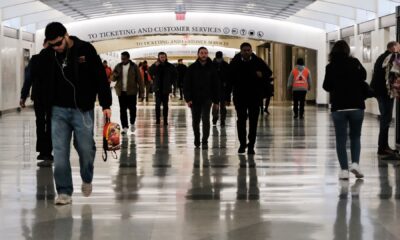

Immigrant workers are helping boost the U.S. labor market
-
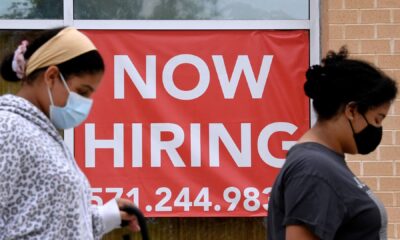

Jobless rates rise in April for all race groups except Black Americans
-


Why the Biden administration is rushing to produce regulations
-
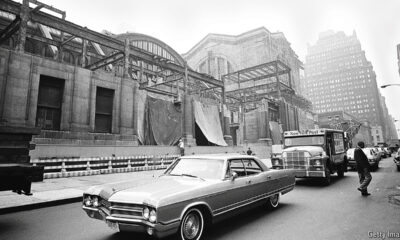

Seaport Tower shows New York’s fight between housing and heritage
-


A surprising Japanese presence in a traditional American craft
-


Joe Biden is practising some Clintonian politics
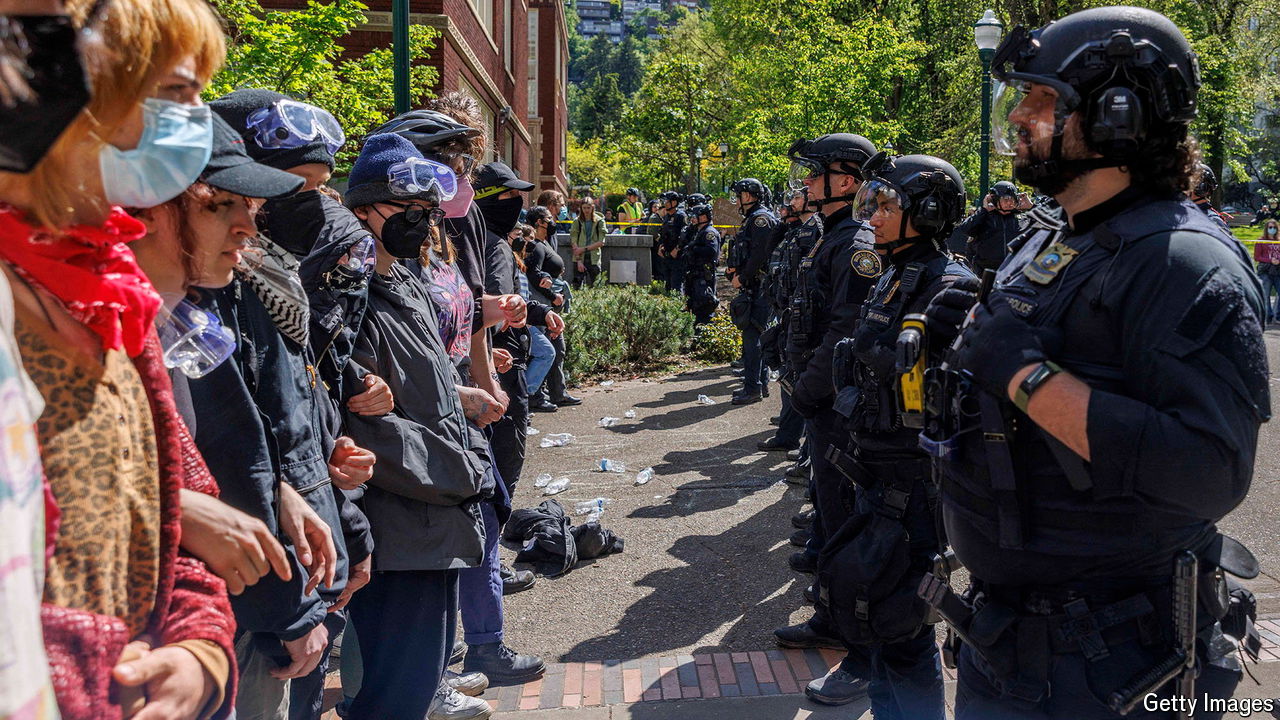
This is the introduction to Checks and Balance, a weekly, subscriber-only newsletter bringing exclusive insight from our correspondents in America.
Sign up for Checks and Balance.
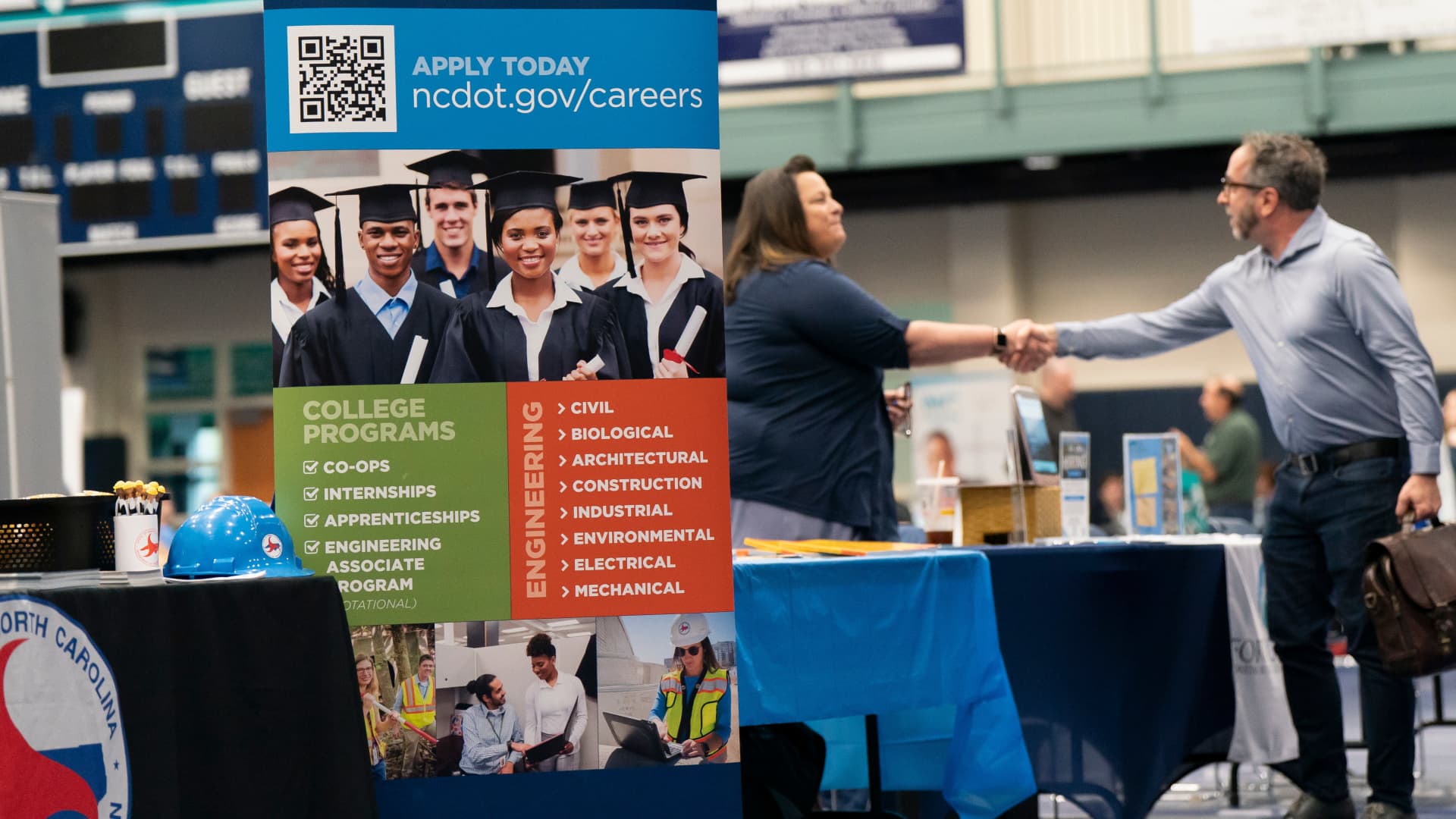
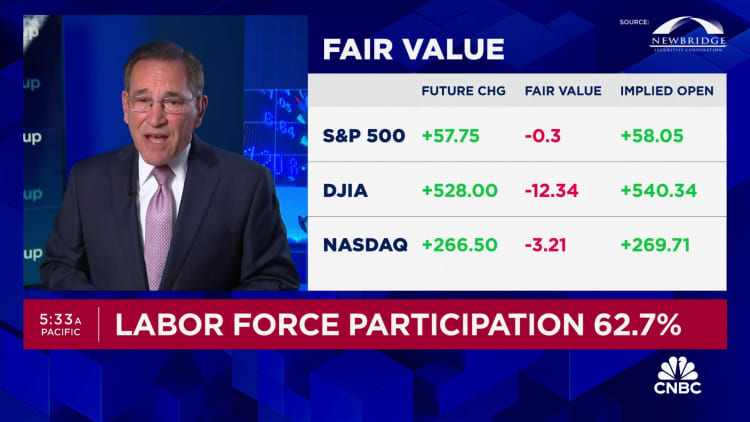
The U.S. economy added fewer jobs than expected in April while the unemployment rate rose, lifting hopes that the Federal Reserve will be able to cut interest rates in the coming months.
Nonfarm payrolls increased by 175,000 on the month, below the 240,000 estimate from the Dow Jones consensus, the Labor Department’s Bureau of Labor Statistics reported Friday. The unemployment rate ticked higher to 3.9% against expectations it would hold steady at 3.8%.
Average hourly earnings rose 0.2% from the previous month and 3.9% from a year ago, both below consensus estimates and an encouraging sign for inflation.
The jobless rate tied for the highest level since January 2022. A more encompassing rate that includes discouraged workers and those holding part-time jobs for economic reasons also edged up, to 7.4%, its highest level since November 2021. The labor force participation rate, or those actively looking for work, was unchanged at 62.7%.
Wall Street already had been poised for a higher open, and futures tied to major stock market averages added to gains following the report. Treasury yields tumbled after being little changed before the release. The report raised the prospect of a “Goldilocks” climate where growth continues but not at such a rapid pace to force the Fed to tighten policy further.
“With this report, the porridge was just about right,” said Dan North, senior economist at Allianz Trade. “What would you like at this point the cycle? We’ve had interest rates jacked up pretty high, so you would expect to see the labor market slow down a little. But we’re still at pretty high levels.”
Consistent with recent trends, health care led job creation, with a 56,000 increase.
Other sectors showing significant rises included social assistance (31,000), transportation and warehousing (22,000), and retail (20,000). Construction added 9,000 positions while government, which had shown solid gains in recent months, was up just 8,000 after averaging 55,000 over the previous 12 months.
Revisions to previous months took the March gain to 315,000, or 12,000 from the initial estimate, and February to 236,000, a decline of 34,000.
Household employment, which is used to calculate the unemployment rate, increased by just 25,000 on the month. Workers holding full-time jobs soared by 949,000 on the month, while those hold part-time jobs slumped by 914,000.
The report comes two days after the Fed again voted to hold borrowing costs steady, keeping its benchmark overnight borrowing rate in a targeted range between 5.25%-5.5%, the highest in more than 20 years.
Following the decision, Chair Jerome Powell characterized the jobs market as “strong” but noted that inflation is “too high” and this year’s economic data has indicated “a lack of further progress” in getting inflation back to the Fed’s 2% target.
But market action shifted after the jobs report indicated an easing labor market and softer wage increases. Traders priced in a strong chance of two interest rate cuts by the end of 2024, with the first reduction expected to come in September, according to CME Group data.
“This is the jobs report the Fed would have scripted,” said Seema Shah, chief global strategist at Principal Asset Management. “The first downside payrolls surprise in several months, as well as the dip in average hourly earnings growth, will bring the rate cutting dialogue back into the market and perhaps explains why Powell was able to be dovish on Wednesday.”
Though inflation has come well off its highs in mid-2022, it is still considerably above the central bank’s comfort zone. Most reports this year have shown inflation around 3% annually; the Fed’s own preferred measure, the core personal consumption expenditures price index, most recently was at 2.8%.
Higher prices have been putting upward pressure on wages, part of an inflation picture that has kept the Fed on the sidelines despite widespread market expectations that the central bank would be cutting interest rates aggressively this year.
Most Fed officials in fact had been mentioning the likelihood of reductions in their public comments. However, Powell at his post-meeting news conference Wednesday made no mention of the likelihood that rates would be lowered at some point this year, as he had in the past.
Don’t miss these exclusives from CNBC PRO
Economics
Immigrant workers are helping boost the U.S. labor market
Published
2 weeks agoon
May 4, 2024
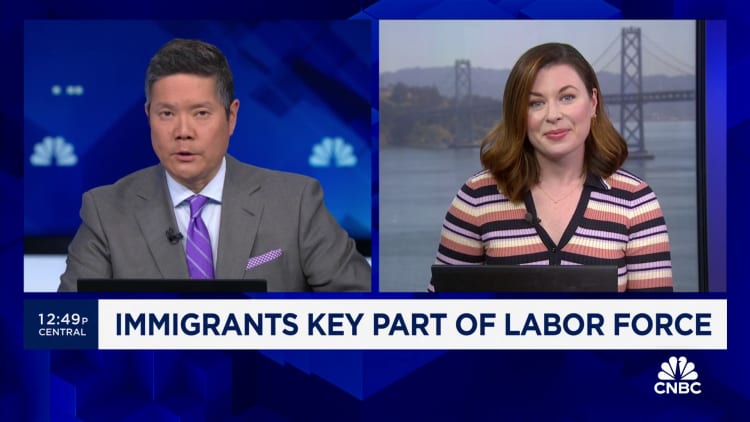
The strong jobs market has been bolstered post-pandemic by strength in the immigrant workforce in America. And as Americans age out of the labor force and birth rates remain low, economists and the Federal Reserve are touting the importance of immigrant workers for overall future economic growth.
Immigrant workers made up 18.6% of the workforce last year, a new record, according to Bureau of Labor Statistics data. Workers are taking open positions in agriculture, technology and health care, fields where labor supply has been a challenge for those looking to hire.
Despite the U.S. adding fewer-than-expected jobs in April, the labor force participation rate for foreign-born workers ticked up slightly, to 66%.
“We don’t have enough workers participating in the labor force and our birth rate has dropped down 2% last year from 2022 to 2023. … These folks are not taking jobs. They are helping to bolster and helping us build back — they’re adding needed workers to the labor force,” said Jennie Murray, CEO of the National Immigration Forum, a nonpartisan nonprofit advocacy organization.
The influx of immigrant workers is also a projected boost to U.S. output, and is expected to grow gross domestic product over the next decade by $7 trillion, Congressional Budget Office Director Phillip Swagel noted in a February statement accompanying the 2024-2034 CBO outlook.
“The labor force in 2033 is larger by 5.2 million people, mostly because of higher net immigration. As a result of those changes in the labor force, we estimate that, from 2023 to 2034, GDP will be greater by about $7 trillion and revenues will be greater by about $1 trillion than they would have been otherwise. We are continuing to assess the implications of immigration for revenues and spending,” Swagel wrote.
‘Huge competition’
Goodwin Living, a nonprofit faith-based elder-care facility in Northern Virginia that cares for 2,500 adults day to day, is heavily reliant on immigrant workers. Some 40% of its 1,200 workers are foreign-born, representing 65 countries, according to CEO Rob Liebreich, and more workers will be needed to fill increasing gaps as Americans age and need assistance.
“About 70% of 65-year-olds are expected to need long-term care in the future. We need a lot of hands to support those needs,” Liebreich told CNBC. “Right now, one of the best ways that we see to find that is through people coming from other countries, our global talent, and there’s a huge competition for them.”
In 2018, Goodwin launched a citizenship program, which provides financial resources, mentorship and tutoring for workers looking to obtain U.S. citizenship. So far, 160 workers and 25 of their family members have either obtained citizenship or are in the process of doing so through Goodwin.
Wilner Vialer, 35, began working at Goodwin four years ago and serves as an environmental services team lead, setting up and cleaning rooms. Vialer, who came to the U.S. 13 years ago from Haiti, lost his job during the pandemic and was given an opportunity at Goodwin because his mother had been employed at the facility.
He applied for U.S. citizenship before getting his current job, but after he worked there for six months, the Goodwin Living Foundation covered his application fee of $725, the nonprofit said. Vialer became a U.S. citizen in 2021, and his 15-year-old daughter received a citizenship grant and became a U.S. citizen in 2023.
Vialer’s hope is to have his wife join the family from Haiti, as they have been separated for six years.
“This program is a good opportunity,” Vialer said. “They help me, I have a family back home. … This job really [does] support me when I get my paycheck to help them back home.”
Workers are not required to stay with Goodwin after becoming U.S. citizens, but those who do stay are there 20% longer than those who do not participate in the program, Liebreich said. Speeding up the path to citizenship is key to remaining competitive in a global economy, he added.
“If we want to attract and retain this global workforce, which we desperately need, we need to make the process a lot easier,” Liebreich said.
Looking ahead to November, immigration will be a hot topic on the presidential campaign trail and for voters. Both President Joe Biden and former President Donald Trump have made trips to the southern border in recent months to address the large number of migrants entering the country.

Betting on the Kentucky Derby? Here’s how to think like a professional handicapper.

Warren Buffett says Greg Abel will make Berkshire Hathaway investing decisions when he’s gone

EV makers win 2-year extension to qualify for tax credits

Are American progressives making themselves sad?

‘Best Firms for Tech’ 2024 deadline extended to April 10

